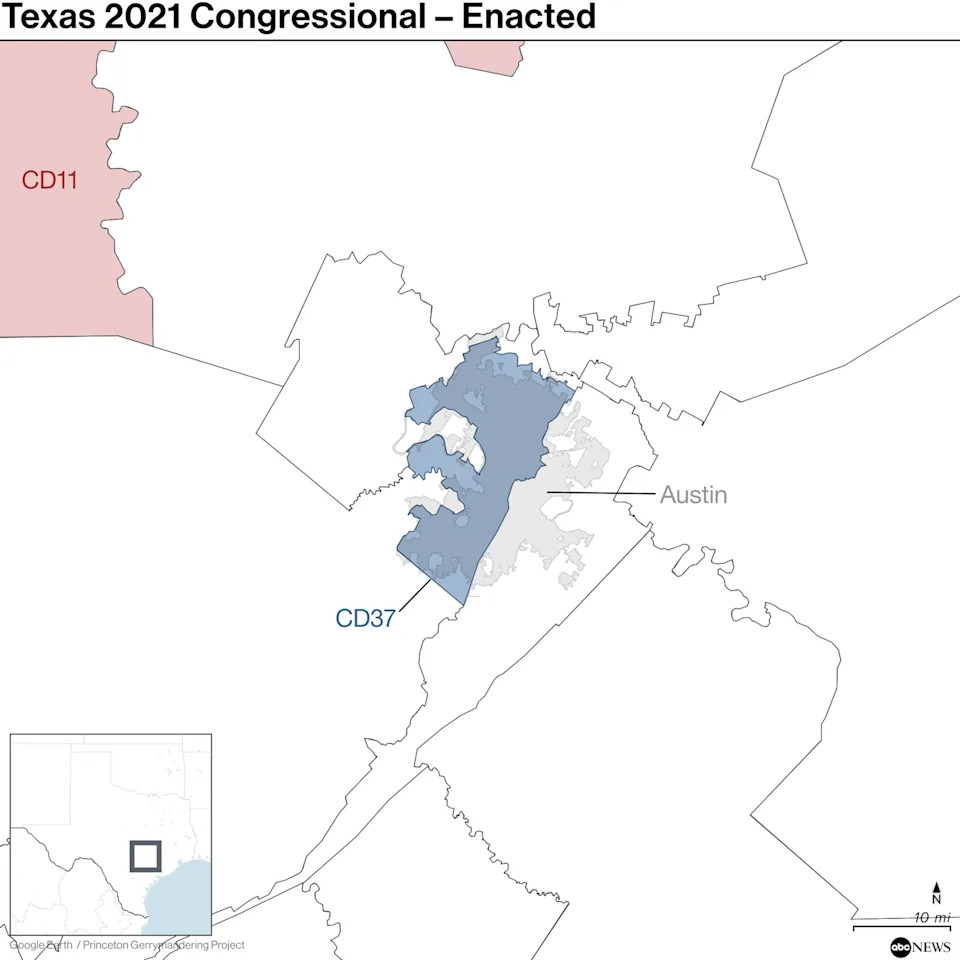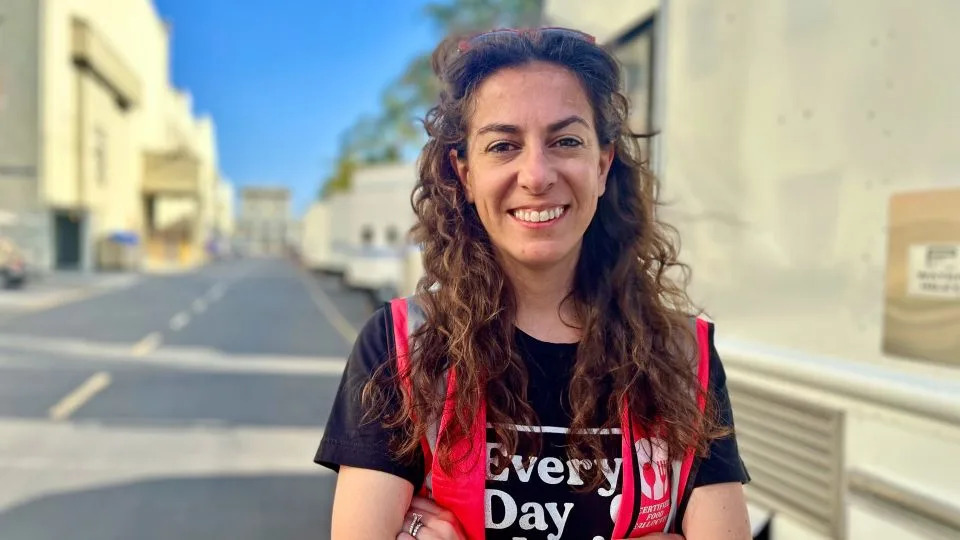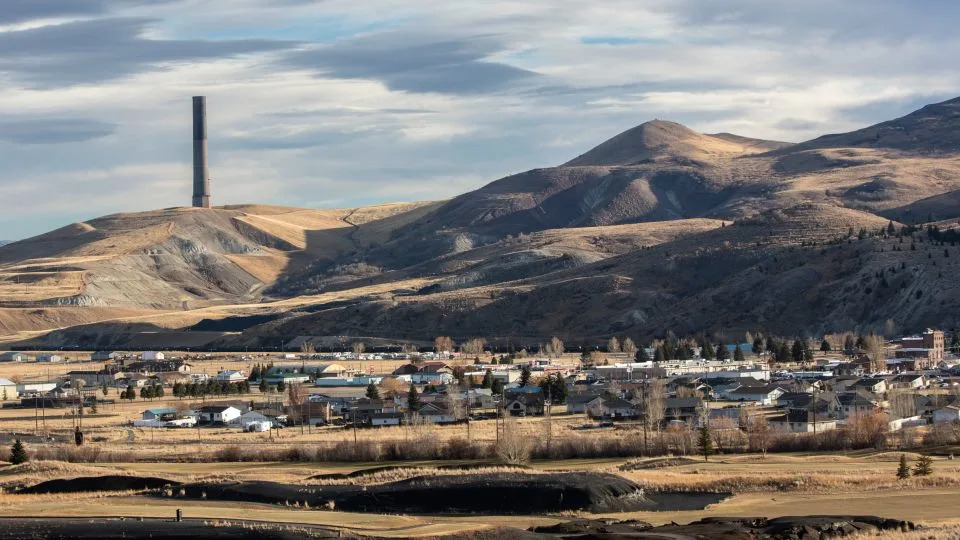As Texas Republicans try to muscle a rare mid-decade redistricting bill through the Legislature to help Republicans gain seats in Congress -- at President Donald Trump's request -- residents in Austin, the state capital, could find themselves sharing a district with rural Texans more than 300 miles away.
The proposed map chops up Central Texas' 37th Congressional District, which is currently represented by Democrat Rep. Lloyd Doggett, will be consumed by four neighboring districts, three of which Republicans now hold.
One of those portions of the Austin-area district was drawn to be part of the 11th District that Republican Rep. August Pfluger represents, which stretches into rural Ector County, about 20 miles away from the New Mexico border.

Rural congressional districts, where people often live further apart, tend to be larger because districts are intended to have roughly the same number of residents so one American’s vote is not more diluted than another’s. Further, fellow rural voters are likelier to share demographic similarities with each other than with urban voters.

That would mean people in that area would share a congressman with people who live more than 311 miles away, a distance that is about 15 times more than that between them and those who currently live the farthest away.
"If you look at many of these districts, whether they're here or elsewhere in the nation, you do not necessarily see a community of interest," Sherri Greenberg, the assistant dean for the LBJ School of Public Affairs at UT Austin told ABC News. "You don't see the following, for instance, county lines or city lines. You see perhaps along skinny districts, or districts that look like a piece of pie where you are not keeping communities together or interests together."
Greenberg, asked what the new map means for the 37th district, said, "you're spreading thin across many, many miles, with different cities, counties, communities, different interests, different topography, geography, culture, potentially."
Greenberg served in the Texas House as a Democrat in the 1990s.
Redistricting is an exercise that state legislatures participate in after the decennial census, accounting for population shifts across the country, and doing so in the years between a census is rare. But the White House in June approached Texas Republicans about redrawing the map ahead of the 2026 midterm elections, to protect their fragile majority in the U.S. House of Representatives in Washington.
Last month, President Trump said he was looking for "a very simple redrawing; we pick up five seats."
David Wasserman, senior editor and elections analyst for The Cook Political Report, told ABC News that the proposed map could lead Democrats on a "collision course," finding themselves competing for the remaining Democratic-leaning district in their area. One such showdown could happen in Austin between Doggett and Rep. Greg Casar.
Democrats have slammed the draft map as being "rigged," a "power grab," and "racist" and Texas House legislators have fled the state to preclude Republicans of the quorum needed to pass it.
"They're trying to suppress the votes of Black and brown Austinites right now under this map," Casar said Monday at a protest outside the Texas governor's residence. "We won't let that happen, because if they're able to suppress the votes of Austinites under Trump's plan, soon enough, they'll try to suppress the votes of all Americans."
Wasserman said he estimates the proposed map would help Republicans pick up three to five additional seats in Texas by spreading out minority voters.
"This map would clearly impair the voting strength of Texas' minority voters," Wasserman said. "It dilutes or eliminates districts where minority voters have elected Democrats in recent years."
But Greenberg and Wasserman said Democrats may face an uphill battle in court because of voting trends that show Latinos shifting toward conservatives, making it harder to argue that drawing them out of Democratic districts prevent them from voting for who they want.
"Republicans will make the case in court that Hispanic voters no longer constitute a cohesive political group because they've migrated so much towards Donald Trump, and that could really weaken Democrats' argument in court that those performing districts deserve protection," Wasserman said.
It's a case Republican state Rep. Carl Tepper made to ABC News.
"These new districts reflect the population and the voting trends of Texas," Tepper said. "We are a vast and very heavily Republican state, conservative state, and we deserve some more consideration sending our delegation to the U.S. House of Representatives.
Several of the protesting Texas state lawmakers' Democratic allies in blue states have vowed to pursue redrawing congressional lines in their own states, including California, to shore up Democrats' numbers and counter what is happening in Texas.
If Texas changes its maps mid-decade, and other states follow suit over the next few years, Greenberg says the constant changes could lead to chaos.
"If you're having constant redistricting, it would be chaos. I mean, for people to run, they have to have -- know their districts. For, you know constituents who are voting, they need to know who they're voting for. If you are having all over the nation this constant redistricting every year, I don't know how that works."








Comments